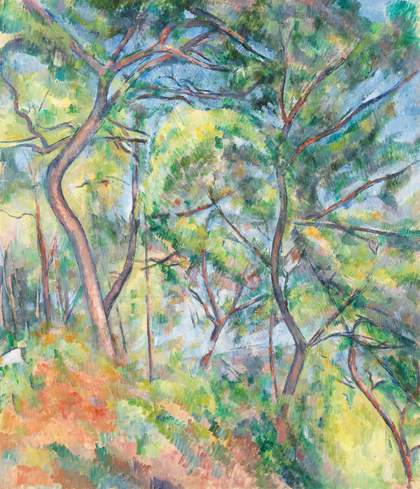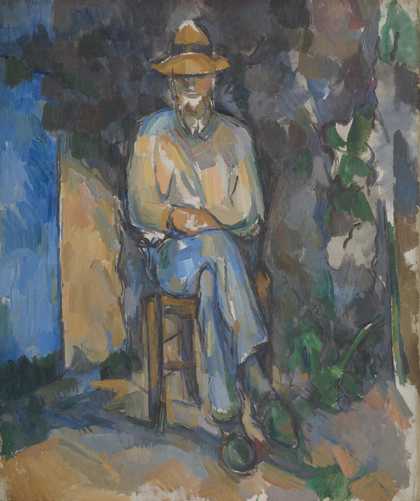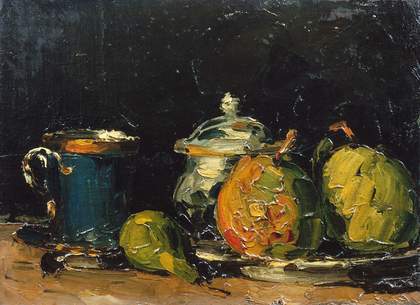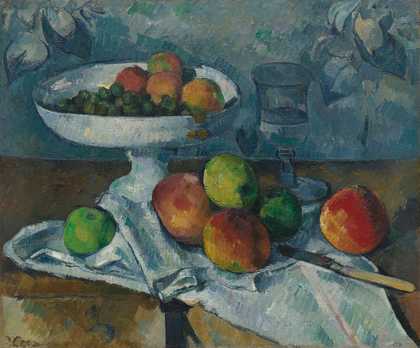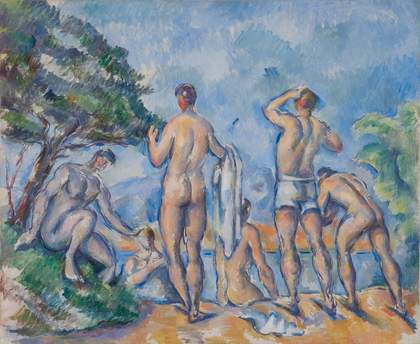
Paul Cezanne
Bathers 1890–2
Oil paint on canvas
54.3 × 66 cm
Saint Louis Art Museum, Funds given by Mrs. Mark C. Steinberg 2:1956
Listen to this article
In Cezanne’s Bathers 1890–2, six nude, presumably male, figures engage as much with each other as with the blue water in front of them. They do not make eye contact with the viewer but instead turn towards each other or the landscape – a distant mountain engulfed in an atmospheric blue sky – instigating a conversation between their bodies and their surroundings. The figures are fleshy with soft, curved forms and they show compassion through touch and contemplative engagement with their natural environment. This is not a scene depicting typical displays of masculine prowess. The rounded edges of their bodies mimic the shrubbery, while the blues, greys, pinks and oranges are carried directly from the landscape into the figures, which sprout from the earth like trees. Through his handling of paint, Cezanne is capturing a sensation of being outdoors, probably influenced by his experiences of plein air painting with fellow artist Camille Pissarro.
The bathers are arranged on the bank in a frieze-like barricade, lyrically touching one another and connecting the tree on one side of the picture plane to the foliage on the other; hand to head, arm to knee, and so on. A sketched outline is the only thing defining one body from the next, and there is occasional liberation from the otherwise solid forms, where their outlines are broken and bare canvas peeks through. Perhaps this influenced Henri Matisse’s Dance 1910, which similarly shows a group of figures on a bank, linked in a continuous chain. In both paintings, the group of figures reads as almost one abstract shape.
In my own paintings and drawings, I abstract the male nude, allowing different narratives to emerge. Similarly to Cezanne, who continued to make paintings of bathing scenes until the end of his life, I return to motifs, figures and compositions. As I engage with imagery through drawing with charcoal and painting en plein air, forms combine and soften, allowing me to see the information more abstractly: multiple bodies become one, and figures merge into anthropomorphic landscapes. By working in this way, I develop a sense of confidence in my imagery. This process allows the painting to move beyond representation and for its emotional life to come to the fore.
Jake Grewal is an artist who lives in London.
Audio narration by Wesley Nzinga.

